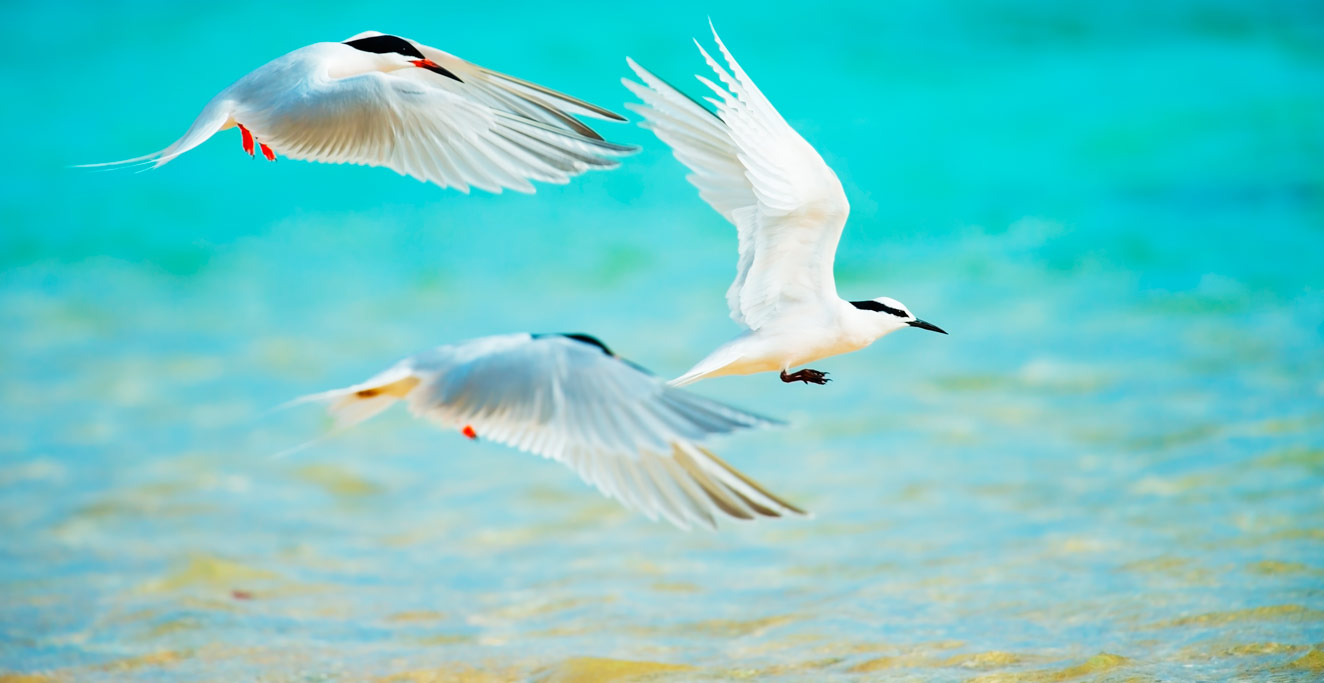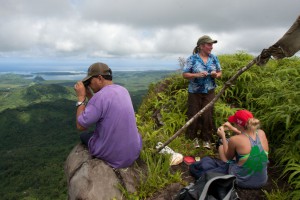With seven species of birds found nowhere else on earth and another nine unique to the Micronesian region, Pohnpei has developed a special place in the hearts of international birders. On this page, we’ve included information about all the target species and where you might find them, as well as providing suggestions about where to book tours, hire guides, or get additional assistance. Precise topographic hiking maps and information about “hotspot” birding locations on Pohnpei can (or will) be found in all of the eco-adventure map guides.
Proposed Important Bird Areas (IBA)
In 2007, six areas were proposed by researchers as Important Bird Areas (in green), having “global, regional, or sub-regional biodiversity conservation importance.” These are the Pohnpei Watershed Forest Reserve, which includes the entire central region of the island (mostly above 400 meters), Nan Madol and adjacent southeastern Pohnpei coastal area in Madolenihmw, the Pillapen Kepin Watershed in Sokehs, the Salapwuk Plateau and Enipein Watershed of Kitti, and Olouna Island at And Atoll. These areas were chosen either because they had the highest concentrations of vulnerable, near-threatened, or regionally-restricted species or because they were home to a significant percent of the total population of a species. Our map also shows additional hotspots (in yellow) where you’re likely to have good luck finding other species on this page.
Where to Watch Birds
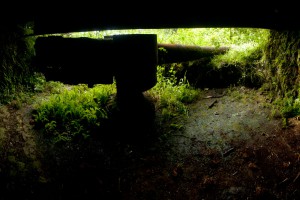
Sokehs Mountain
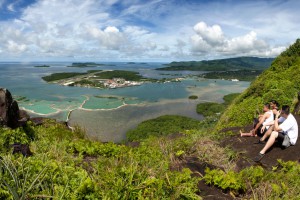
Sokehs Rock
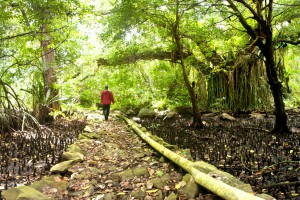
The German Road
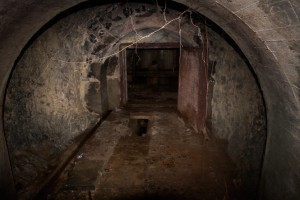
Lenger WWII Historical Sites
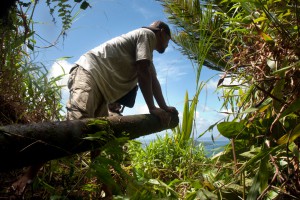
Dolen Nett / Pohnlehr
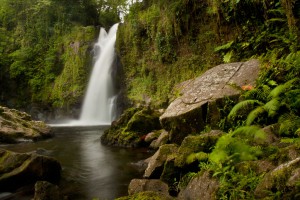
Liduduhniap Waterfall, Nanipil & Nan Madap Attractions
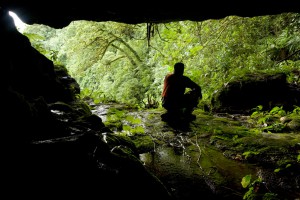
Lou Rahn Cave & Waterfall
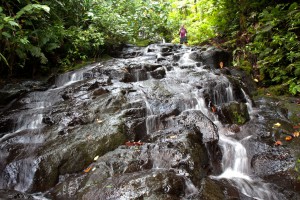
Nan Kiepw & Na Malek
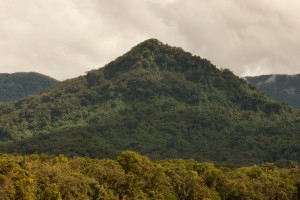
Dolen Eirike
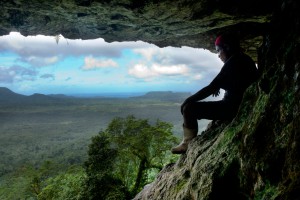
Nan Koropwung Cliff & Caverns
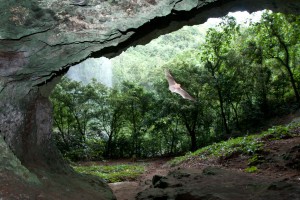
Pahntakai Cave & Waterfall
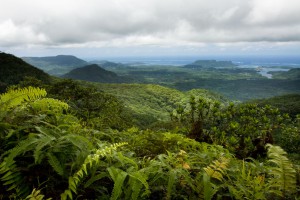
Dolen Nahnsapwe
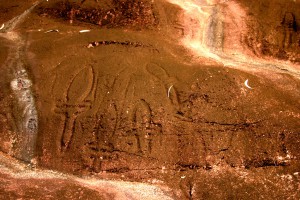
Pohnpaip Petroglyphs
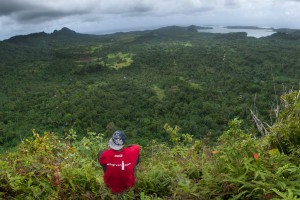
Dolen Merewi
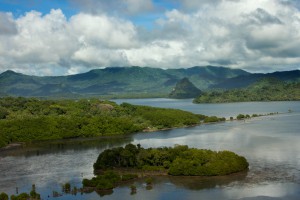
Madolenihmw Bay Area
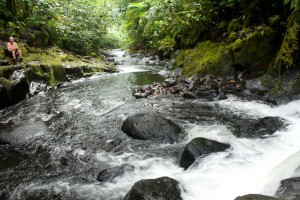
Nankepinmerepw River Valley
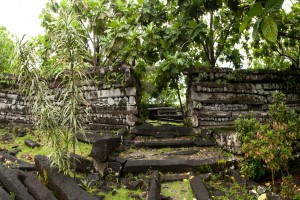
Nan Madol Ruins
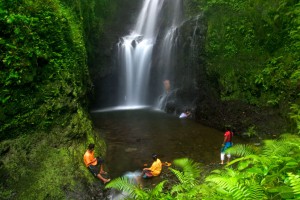
The Six Waterfalls Hike
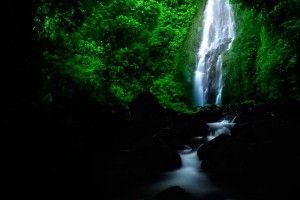
Sahwartik & Sahwarlap Waterfalls
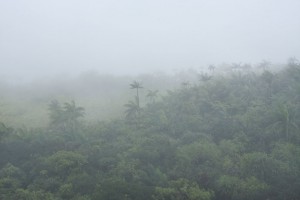
Nahnalaud — the Big Mountain
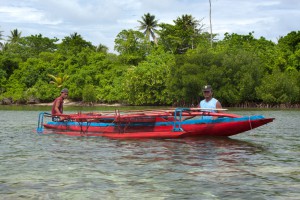
Paddling Around Central Madolenihmw
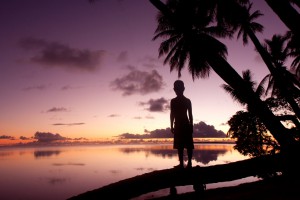
Ahnd & Pakin Atolls
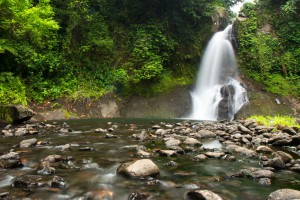
Pahn Sile Waterfall
Birds Endemic to Pohnpei
 Long-billed White-eye
Long-billed White-eye
Rukia longirostra
Torong (chō.rōng)
The Long-Billed White-eye, found only on Pohnpei, is distinguished from the Grey-Brown White-Eye by its pale golden chest and long curved beak, which it uses to extract nectar from flowers and insects from rotting wood. The bird is quite rare, listed as Near-Threatened by BirdLife International, but it is possible to find them. Past birders have had success in the mid-level forests (usually at elevations above 300 meters) but also along the utility road leading from the Nanipil Valley toward Nanpohnmal.

Pohnpei Cicadabird
Coracina insperata
Totopai (chō.chō.päi)
The cicadabird is one of the harder species to locate, but it is possible. Past visitors have found them along the utility road leading from the Nanipil Valley toward Nanpohnmal, on the trail above Liduduhniap Waterfall, as well as in the mangroves of Enipein.

Pohnpei Fantail
Rhipidura kubaryi
Likepisir (lee.kĕp.seer)
This small, mostly brown bird is quite common throughout forested areas on Pohnpei and the larger lagoon islands. It is known to follow hikers, hopping quietly along the ground or from twig to twig just out of reach. Its distinguishing feature is its white-tipped tail, which it spreads out fan-like from time to time. You can easily find it in pretty much any dense lowland or mid-level forest — Sokehs Mountain, above Liduduhniap Waterfall, and on the trails to Pahn Sile, Lehnpaipohn, and Sahwartik waterfalls.
 Pohnpei Flycatcher
Pohnpei Flycatcher
Myiagra pluto
Koikoi (kōi.kōi)
Little is known about this small forest-dweller, found only on Pohnpei. The bird has dark-brown or dark-gray coloration. Though the flycatcher seems to be shy and is fairly hard to spot, its populations appear to be healthy (at least as far as ICUN is concerned). Two good places to look for flycatchers are on the trail above Liduduhniap Waterfall and along the quiet back-roads west of the College of Micronesia National Campus in Palikir. Photo © Jon Hornbuckle. Used with permission.
 Pohnpei Kingfisher
Pohnpei Kingfisher
Halcyon cinnamomina reichenbachii
Kutoahr (kū.chäwhr)
Though its relatives are found on other islands in Micronesia, this sub-species is unique to Pohnpei. The plucky little bird is identified by its rusty cap, white breast, and blue wings. It can be spotted without difficulty in the mangroves, the lowland forest fringe, and even in Kolonia Town (where it loves perching on telephone wires). The birds are territorial and can be seen chasing off their sometimes larger competitors. They are also present on And Atoll.
 Pohnpei Lorikeet
Pohnpei Lorikeet
Trichoglossus rubiginosus
Serehd (sĕ.rĕht)
This small red-purple parrot is found only on Pohnpei Island, its lagoon islets, and And Atoll. Once threatened by locals desiring the birds as pets, the Pohnpei Lorikeet has made a massive comeback and is now so widespread that it is seen virtually everywhere, including right in the middle of town. The bird is easy to identify by its incessant screeching and awkward hyperactive flutter. It is often seen in pairs or groups of four to six individuals.
 Pohnpei Mountain Starling
Pohnpei Mountain Starling
Apolonis pelzelni
Sie (see.ŭ)
This possibly extinct species has dark brown or black feathers covering its entire body and may be difficult to distinguish from its ubiquitous cousin, the Micronesian Starling. The Pohnpei Mountain Starling has not been spotted since 1994, when one individual was shot at an elevation of 750 meters. The bird’s documented habitat is the upper forests of Pohnpei’s interior. Its decline is believed to have been caused by clearing of highland forests, hunting, and predation by non-native rats. If you want to try for the Pohnpei Mountain Starling, your best bet is in the watershed areas of Sokehs above 400 meters and Madolenihmw above 600 meters.
Birds Endemic to the Micronesian Region
 Caroline Islands Ground Dove
Caroline Islands Ground Dove
Gallicolumba kubaryi
Peluhs (pĕ.lūhs)
This species of dove, found only on Pohnpei and Chuuk, has a purplish-crimson back and shoulders and a white breast and face. It occasionally makes a low moaning call, but is very difficult to spot. The bird is listed as Vulnerable on the IUCN Red List, and it is estimated that there are less than 1,500 individuals across the two states. Hunting and habitat destruction as a result of upland sakau cultivation has forced the bird further into the interior. Never the less, it is occasionally seen in the mangroves or in overgrown ravines, particularly in thickets of wild hibiscus below 200 meters. Photo © Tony Morris. Used with permission.
 Caroline Islands Reed Warbler
Caroline Islands Reed Warbler
Acrocephalus syrinx
Lemwedi (lĕm.wĕ.tee)
The Caroline Islands Reed Warbler is a small Old World warbler found only in Micronesia. It has a brown-grey back, head, and tail and a pale cream-colored or yellow-tinged breast. Places to look for these birds include Temwen Island and the areas around Nan Madol, along the utility road leading from the Nanipil Valley toward Nanpohnmal, at And Atoll, and other coastal and grassland areas.
 Caroline Islands Swiftlet
Caroline Islands Swiftlet
Aerodramus inquietus
Kelimwud (kĕ.lee.mwūt)
This small member of the swift family is found throughout the Caroline Islands. On Pohnpei, swiftlets are abundant near most cliffs and around caves, bunkers, and tunnels, where they build nests on the walls. You can see them at any time of day, but they are most active in the early morning and late afternoon, when they dart about in search of insects. Swiftlets often live alongside Pohnpei’s insectivorous bats. Interesting places to see swiftlets include the gun bunkers on Sokehs Mountain and Kupwuriso Mountain; Japanese caves and tunnels on Lenger Island; Pahntakai Cave Waterfall in U; and the cave at the top of Lou Rahn Ridge in Nett.
 Caroline Islands White-Eye
Caroline Islands White-Eye
Zosterops semperi
Tiht (cheech)
Also known as the Citrine White-Eye, this small bird found throughout the FSM and Palau has light olive coloration on the back moving toward yellow on the head and throat. The eye has a distinctive white ring around it and the breast is light olive or cream-colored. Visiting birders have had the most luck spotting these white-eyes in the open grassland areas of Nett, along the utility road leading from the Nanipil Valley toward Nanpohnmal, and on the Eschiet property. Photo © Tony Morris. Used with permission.
 Crimson-Crowned Fruit Dove
Crimson-Crowned Fruit Dove
Ptilinopus porphyraceus
Kiniwed (kĕ.nĕ.wĕt)
The hooting call of the Crimson-Crowned Fruit Dove is common in all dense forest areas away from human habitation, but the bird is harder to spot because of its coloration. The wings, back and lower part of the body are forest green, while the breast, neck and most of the head is a creamy yellow color. There’s usually also a bright patch of yellow beneath the white-tipped tail feathers. The most distinctive feature is the purple cap on the top of the head. The bird likes to hide in branches about three to five meters off the ground and feeds on the fruits of the strangler fig and wild banana. The easiest place to find Crimson-Crowned Fruit Doves is on Sokehs Mountain, but almost any low to mid-level forest will do. It can also be found in the mangroves. Photo © Tony Morris. Used with permission.

Grey-Brown White-Eye / Dusky White-Eye
Zosterops cinereus
Tiht (cheech)
Found in Palau and the FSM, the Grey-Brown White-Eye is a small bird with a light gray chest, dark gray wings and head, and an unmistakable white ring around the eyes. It prefers the lowland forests or savannahs and the company of other bush and grass-dwellers. Good places to look are along the utility road leading from the Nanipil Valley toward Nanpohnmal and in the open savannahs of Nett (on the Eschiet property). The Grey-Brown White-Eye is on BirdLife International’s 2013 Red List.
 Micronesian Honeyeater
Micronesian Honeyeater
Myzomela rubratra
Pwiliet (pwee.lee.ĕch)
This species of honeyeater is abundant throughout inhabited areas (including Kolonia), Pohnpei’s lowlands, and the mid-level forests. The male is easily identified by its bright red breast and head, black wings, and slightly curved beak. The female’s coloration is not as flamboyant. The bird is also found in the forests of And Atoll. Photo © Tony Morris. Used with permission.
 Micronesian Imperial Pigeon
Micronesian Imperial Pigeon
Ducula oceanica
Mwuroi (mwū.rōi)
The Micronesian Imperial Pigeon could very well be the Moby Dick of Pohnpei birders, the one you just can’t tick off the list. Clearing of native forest and excessive hunting has brought the pigeon to Near-Threatened status on the IUCN Red List. On Pohnpei the population declined as much as 70% from the mid-1980s to mid-1990s. It is now believed there are as few as 800 pigeons left on the island and they’re mostly found deep in the uninhabited interior mountains. The bird is possibly extinct in the Micronesian islands east of Pohnpei. If you want a chance at spotting the Micronesian Imperial Pigeon, you’re going to have to do some serious hiking (Nahnalaud, Pohnpei’s highest mountain near the center of the island, is a good bet). Distinctive features include a light gray breast, neck, and head; dark gray wings; and a rusty colored lower body.
 Micronesian Starling
Micronesian Starling
Aplonis opaca
Sioahk (see.äwhk)
This jet-black bird is extremely common in all environments from Pohnpei’s mangroves all the way to the upper-level forests. It’s frequently seen in the lower branches in the company of the Micronesian Honeyeater. It also lives on And Atoll. Photo © Tony Morris. Used with permission.
 Short-Eared Owl
Short-Eared Owl
Asio flammeus
likoht (lee.kōch)
The short-eared owl is the only bird of prey found on Pohnpei. Though the short-eared owl is found in many places in the world, Pohnpei’s owl might be a sub-species. Shy of people, the owl is rarely seen near inhabited areas or anywhere people regularly pass. One of its major habitats was destroyed when Pohnpei’s State Hospital was built in the open coastal grasslands, where the bird likes to nest. Currently, the best places to spot a short-eared owl are on the bushy summits of Dolen Nett / Pohnlehr and Sokehs Rock. You are most likely to see the bird in the late afternoon and early evening, when it is leaving for or returning from the hunt. Photo © Tony Morris. Used with permission.
Seabirds
 |
 |
Black-Naped Tern
Sterna sumatrana
Karkar (kär.kär)
Great Crested Tern
Thalasseus bergii
Sakier (sä.kee.yĕr)
Less prevalent than the Brown Noddy and White Tern, both of these species are, never the less, easy to find around the lagoon areas of Pohnpei and its satellite atolls. Like the White Tern, Black-Naped Terns and Great Crested Terns fish to sustain themselves. Reef markers are favorite perching spots. The Great Crested Tern is known to nest on Olouna Island at And Atoll. Photo © Tony Morris. Used with permission.

Black Noddy
Anous minutus
Atet (ä.chĕch)
This member of the tern family is regularly seen flying low over the water outside Pohnpei’s lagoon, often in the presence of its cousin, the Brown Noddy. The birds have the habit of forming dense flocks in the open ocean over schools of pelagic fish; Pohnpeian fishermen typically follow them to find their quarry. The absolute best place to look for black noddies is around Olouna Island at And Atoll. It is believed that as much as 1% of the world-wide population resides around that island. They are also found on And‘s Nikahlap Island, around Kehpara Island on Pohnpei’s southwestern barrier reef, and at Pakin Atoll. Black noddies are distinguished from brown noddies by whitish or light gray tail feathers.
 |
 |
Brown Booby
Sula leucogaster
Kupwur (kū.pwūr)
Red-Footed Booby
Sula sula
Kupwur (kū.pwūr)
The best place to see both of these large oceanic birds is around And Atoll, particularly near little Olouna (a.k.a. “Bird Island”), but also at Nikahlap Island (brown booby). Boobies can also be seen flying amid flocks of fishing noddies over the open water between Pohnpei and And.
 Brown Noddy
Brown Noddy
Anous stolidus
Paret (pä.rĕch)
The Brown Noddy is the most commonly-seen tern in Pohnpei’s waters. Not only is it ubiquitous in the lagoon, outside the reef, and around And & Pakin Atolls, but it is also found soaring high above Pohnpei’s mountainsides and cliffs. Brown Noddies are quite inquisitive; kayakers should not be surprised if one or more of the birds take an interest in them, peering down as they glide low overhead. Sometimes a bird will make several passes over a visitor before moving on.
Great Frigate Bird
Fregata minor
Kasap (kä.säp)
These huge birds glide at high altitude above And & Pakin Atolls. Olouna Island on And is a major nesting site. The identifying feature is the bird’s tail, shaped like an inverted letter “V”.
 White-tailed Tropicbird
White-tailed Tropicbird
Phaethon lepturus
Sihk (seehk)
If you only manage to see one bird on Pohnpei, this is mostly likely it. Tropicbirds are found nearly everywhere, gliding high up above both mountains and coastal areas, their long white tail feathers sailing like streamers behind them. The birds nest on cliffs and steep mountainsides as well as in tall trees. The grove of hardwoods next to the Public Swimming Pool is a popular nesting site.
 White Tern
White Tern
Gygis alba
Kahke (käh.kĕ)
This small pure-white tern likes the placid lagoons of Pohnpei, And Atoll, and Pakin Atoll, where it fishes via plunge-diving. White Terns are particularly active early in the morning and late in the afternoon when there’s little or no wind, fluttering just a few feet above the water as they hunt. They are frequently observed around Nikahlap and Pasa at And Atoll and Kehpara Island on Pohnpei’s southwestern barrier reef. Photo © Tony Morris. Used with permission.


